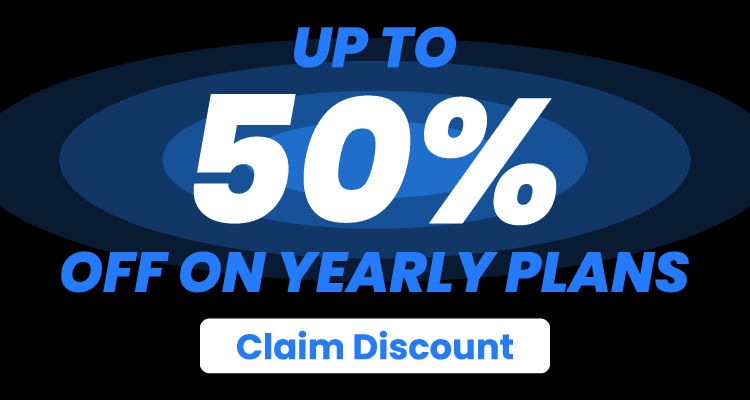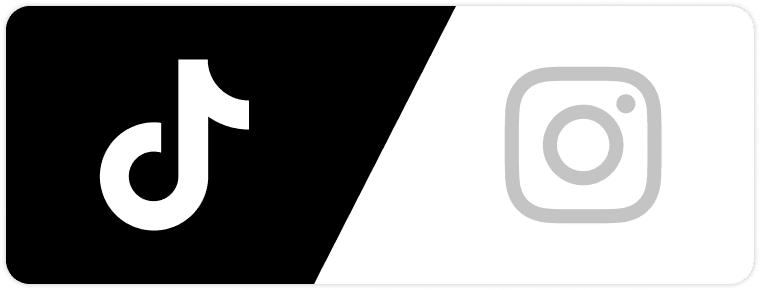A strong landing page can make or break your social media campaign. Whether you’re running ads, promoting a giveaway, or sharing content through your Instagram Stories or TikTok bio, your landing page is where the conversion happens. It’s the first page users see after clicking—and if it doesn’t match the expectations set in your post, you risk losing leads or sales.
Social media moves fast. You’ve only got a few seconds to hold someone’s attention after they tap a link. That’s why your landing page needs to be simple, fast, focused, and optimized for mobile. This guide walks you through everything you need to build an effective landing page for your next campaign.
Match the Message to the Post
The first rule of high-converting landing pages? Keep it consistent with the campaign message. If your Instagram post promotes a free ebook, don’t land users on a generic homepage. Bring them to a dedicated page with a clear headline that repeats the offer and explains what to expect.
Use the same tone, color scheme, and visuals so the experience feels seamless. If you’re targeting photographers, for example, and promoting a lighting guide, make sure your landing page speaks directly to that audience and topic. Photographers looking to grow can also benefit from cross-promotion methods like those shared in these Instagram tips for photographers, which pair well with strong landing strategies.
Use Clear CTAs (Call to Actions)
Your landing page should have one job. Not two, not five—just one. That means one primary CTA, whether it’s signing up for a list, buying a product, or booking a demo. The more actions you offer, the more confused or distracted the visitor becomes.
Use clear, action-based buttons like:
- “Download the Guide”
- “Start My Free Trial”
- “Book My Spot”
And don’t make people scroll to find the button. It should be visible right away on mobile and desktop. Reinforce the CTA throughout the page with short, benefit-focused blurbs that answer the visitor’s question: “What’s in it for me?”
Focus on Mobile Experience First
Since most traffic from Instagram, Facebook, or TikTok comes from mobile users, your landing page needs to look and feel great on a phone. That means:
- Fast loading time
- Large, readable text
- No clutter or pop-ups that cover the screen
- Touch-friendly buttons
You can use tools like Google’s Mobile-Friendly Test or page speed insights to see how your landing page performs. Making even small improvements in speed and usability can lead to a major difference in conversion rates.
And if you’re promoting through Reels, Stories, or Highlights, using top Instagram features is key to driving more users to your page with built-in links.
Write Headlines That Hook
Just like your post or ad needed a strong hook, your landing page headline must do the same. The headline should match the message from your post but also explain what the visitor will gain. Good headlines are short, clear, and benefit-focused.
Examples:
- “Get the 5-Step Checklist to Nail Your First Client Pitch”
- “Learn How to Make Side Income While Studying—Free Course”
- “Download Our Free Guide to Better Portrait Lighting”
If your page promotes a student-friendly side hustle, be sure to include messaging that resonates with that group. You can even pair it with content like this guide to side income for students to add even more value and trust.
Add Social Proof for Trust
Social media traffic tends to be skeptical—so build trust quickly. If you have testimonials, reviews, or even brand logos, use them. Real names, faces, and quotes make your offer more credible. Video testimonials are even better if you can include them without slowing down your page.
If you’re promoting a product or digital service, include stats like:
- “Used by 5,000+ creators”
- “4.9-star rating from 300 users”
- “97% would recommend this to a friend”
This helps lower the risk and increase the likelihood that a new visitor will take action.
Keep the Page Short and Focused
Landing pages don’t need to scroll forever. In fact, shorter pages with a single focus tend to convert better from social media. Keep the sections tight:
- Headline and subhead
- A few lines describing the offer
- A single image or short video
- CTA button
- One trust element (review, logo, or guarantee)
That’s it. If you have extra details, put them on a follow-up page after the user signs up. For example, if someone opts in for an ebook, your thank-you page can include more resources or even a soft pitch for a product.
Avoid Distractions
This is not the time for blog links, menus, or YouTube sidebars. Remove anything that pulls the user away from your intended action. Your landing page isn’t your homepage—it’s a conversion page. That means no:
- Navigation menus
- Multiple CTAs
- Footer links
- Embedded social media feeds
It might feel limiting, but focused pages outperform “pretty” ones almost every time.
Redirect After Action
After someone signs up, downloads, or buys, don’t just say “thanks.” Use your thank-you page or confirmation message to keep the momentum going. Offer them a free bonus, a chance to join your list, or a social follow.
This is also a smart place to build your retargeting list. Just don’t overwhelm people with five different offers right away. Stay helpful and relevant.
If you’re worried about users not finding your page again, remember that Instagram may sometimes cause confusion with blocked or broken links. For clarity, check out this simple Instagram blocking guide to troubleshoot post-access issues.
Top 10 Technologies for Building Effective Landing Pages for Social Media Campaigns
Laravel

Laravel is a popular PHP framework celebrated for its flexibility, scalability, and user-centric design abilities. Speed and reliability are essential when building landing pages for high-traffic social media campaigns. Laravel is packed with built-in tools such as routing and caching, which make backend processes quicker to load.
According to a Google report, 53 percent of mobile users will leave a site if a page takes the site more than 3 seconds to load. With Laravel, though, this risk is mitigated as server responses are optimized, and page loads are sped up. For businesses aiming to reap the full benefits that Laravel has to offer, partnering with a company with expertise in Laravel development is the best choice.
Node.js

Traffic spikes caused by social media campaigns test a website’s capacity. Node.js easily handles such demands. The asynchronous, event-driven architecture on top of the backend supports many concurrent requests without slowing down.
For example, the Fastify benchmarks show that Node.js using its basic HTTP module can handle roughly 70k and even Express js can handle roughly 15k requests per second. Node.js is suited for platforms since more than 96% of global internet users use mobile devices to access content (DataReportal). Node.js development is in high demand by businesses looking to achieve maximum performance.
React.js

One unique feature of React.js is its power to make interactive and responsive user interfaces. Its component-based architecture makes the design and implementation of engaging ones such as sliders, forms, and real-time updates easy to get user engagement.
Consider this: According to the Content Marketing Institute, interactive pages can actually improve conversion rates by 30%. Take React.js as an example: the business can build a dynamic pricing calculator, where based on user input, the price instantly changes and the page becomes more utilitarian and attractive.
WordPress

WordPress is the tool of choice for 43% of all websites (W3Techs). These websites are typically simple and versatile, befitting a company seeking simplicity and versatility. Its drag-and-drop builders, like Elementor or Divi help even non-technical users create visually appealing landing pages.
Plugins like Yoast SEO and Gravity Forms further enhance that functionality by ensuring your pages will be correctly optimized both for search engine optimization and to boost user engagement. WordPress is highly affordable as a solution for small businesses or startups operating within a short lead operation.
Webflow

As a marketer, Webflow fills the gap between design and development, a direct win for creating custom landing pages without coding. Webflow, having a visual interface that supports animation, transitions, and responsive layouts is a clear choice for social media campaigns.
Furthermore, hosting with Webflow means lightning-fast load times. The ability to add this feature is especially valuable for social media-focused landing pages where 70% of consumers reportedly cite page speed as a critical component of their purchase decisions (Unbounce). Additionally, ghost commerce strategies where seamless user experiences lead to conversions without overtly obvious e-commerce features can thrive using Webflow’s flexible design and customization options.
Bootstrap

For landing pages, Responsive design is a no-brainer as 80% of social media use happens on mobile devices (Statista). With its prebuilt CSS and JavaScript components, bootstrap makes it easy to create mobile-friendly pages.
It has a grid system that helps developers lay out content well, respecting text, images, and forms across different screen sizes. It increases the chances that a visitor will be retained and generate conversions.
Google AMP

Accelerated Mobile Pages (AMP) are designed to enhance the mobile experience by providing super-fast loading experiences. AMP is all about helping landing pages load almost instantly to avoid bounce and keep the user engaged.
According to studies AMP Pages load 85x faster than standard web pages (Google). This is especially important when running campaigns for mobile-first audiences, as even a second delay can cause you to miss leads.
Unbounce

Unbounce is a free, dedicated tool to create, test, and optimize landing pages that are completely free. Its interface is very user-friendly and allows marketers to try out different layouts, headlines, and calls to action (CTAs) without relying on a developer to make development modifications.
A feature of the platform’s A/B testing is especially valuable for social media campaigns. To illustrate, a campaign may run two CTAs — “Shop Now” versus “Learn More” — to see which improves conversions. Such data-driven adjustments can make a huge difference in campaign return on investment.
Figma

Great design begins with great landing pages and Figma is a great tool to brainstorm and collaborate. By offering real-time editing capabilities, teams can work together on concepts, together aligning before development starts.
Studies have shown we make a first impression on 94% of our design (ResearchGate). Using Figma to build wireframes and prototypes for landing pages gives businesses more confidence that their landing pages make a first impression that draws in users.
Canva

Social media campaigns are built around visual content. With Canva, users can create professional-looking graphics, banners, and layouts to match landing page designs.
Canva makes even non-designers create eye-catching visuals with pre-designed templates and an easy-to-use interface. According to studies, posts with images attracted 650 percent more engagement than text-only posts (MDG Advertising), suggesting how necessary strong visuals are for social media-driven landing pages.
Conclusion
Creating compelling landing pages in today’s lightning-fast digital experience is both art and science. Laravel and Node.js bring robust technology to your back end, while tools like Canva and Figma provide excellent design technology. All of the social media campaign’s success is a result of each technology, which includes Google AMP to optimize speed and React.js to build dynamic interfaces.
With the right tools and frameworks, you can be sure the right landing pages attract clicks and meaningful actions. Given our increasing dependence on social media and the ever-increasing consumer behavior that is shaped by it, businesses should continue to harness these technologies to stay ahead of the curve and maximize campaign impact and ROI.





